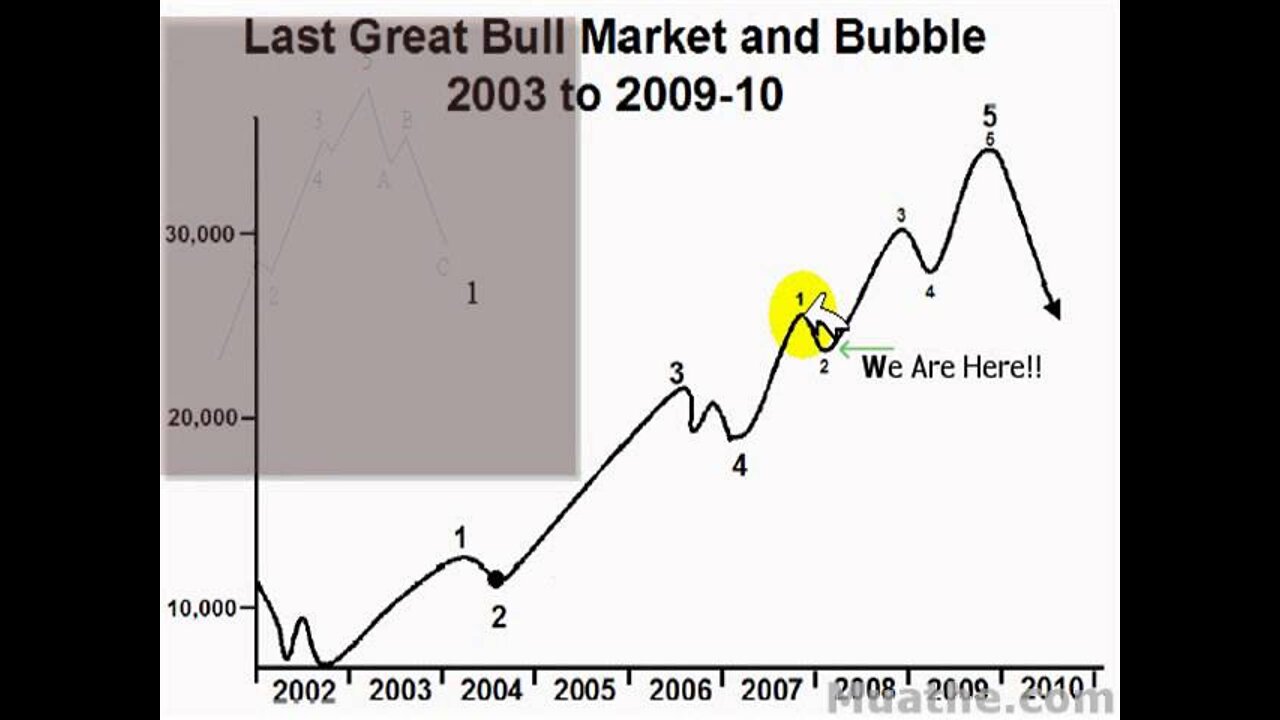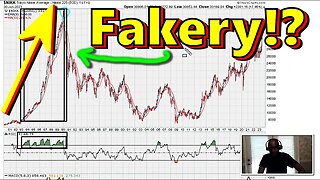Premium Only Content

DOW 25,000 By 2011 - Part 8 of 10
Elliott Wave analysts (or "Elliotticians") may not need to look at a price chart to judge where a market is in its wave pattern. Each wave has its own "signature" which often reflects the psychology of the moment. Understanding how and why the waves develop is the key to applying the Wave Principle; that understanding includes recognizing the characteristics described below.[2]
These wave characteristics assume a bull market in equities. The characteristics apply in reverse in bear markets.
Grand supercycle: multi-decade to multi-century
Supercycle: a few years to a few decades
Cycle: one year to a few years
Primary: a few months to a couple of years
Intermediate: weeks to months
Minor: weeks
Minute: days
Minuette: hours
Subminuette: minutes
ABIX, ACCL, APLX, ATSI, BIOF, CHNR, CPWM, CRDC, DATA, FSTR, GCBC, GENR, INSW, INXIW, JRJC, PINN, REFR, SLXP, SPIR, TPTX, TSCC, UBCP, VIRC, WBPRN, WINN, ANV, AXK, BKR, BYW-WT, BZI, DCU, DDD, EAD, ETC, HDS-WT, HWK, IMM, IRN, IVA, PLG, PLX, PNS, SRS, SVA, THK, TKO, TTG, UPI, WSB, YMI, APU, CAE, CFI, CHP, COA, CXO, DEP, DRL, DVR, EJ, ENT, EXM, FLO, FRX, GNK, JQC, MDG, MZ, NCV, OII, PIR, TPX, VC, WPL, WTI
-
 2:31
2:31
Muathe.com
1 year ago $0.01 earned🟢 Manipulated Stock Market Bubbles & Crashes!?
128 -
 LIVE
LIVE
Talk Nerdy Sports - The Ultimate Sports Betting Podcast
10 minutes ago3/30/25 - 🎙 Sunday Funday Fire: 10 Sharp Bets, 5 Parlays & 2 Locks That Hit Different
283 watching -
 2:01:52
2:01:52
Game On!
19 hours ago $12.85 earnedMarch Madness Final 4 Will Be Set TODAY!
49.8K4 -
 LIVE
LIVE
LumpyPotatoX2
3 hours agoHunt Shadows Family Sunday - #RumbleGaming
487 watching -
 5:04
5:04
Film Threat
1 day agoA WORKING MAN | Film Threat Reviews
24.6K3 -
 22:08
22:08
Misha Petrov
1 day agoMain Character Syndrome Is Spreading
23.7K54 -
 LIVE
LIVE
NeoX5
2 hours agoAssassin's Creed: Shadows - Wheelin and Dealin #Factor75partner | Part 6 | Rumble Gaming
65 watching -
 LIVE
LIVE
Chi-Town Gamers Livestreams
1 hour agoBaldur's Gate 3 W/ CTG & XayRico Ep. 4 *FOR REAL THIS TIME* | 9 Hour Stream...LFG!
66 watching -
 LIVE
LIVE
DarknessGames
15 hours agoIT'S BACK! - Dark Souls II (Part 7)
68 watching -
 28:30
28:30
CatfishedOnline
1 day agoWoman Wants to Leave BF for Lover or Romance Scam?
29K17